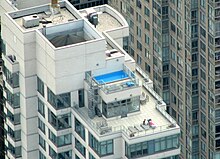British Museum
This drawing shows the western end of Westminster Bridge over the River Thames. Work is still taking place on the parapet, and a barricade prevents access to the roadway. The close focus on a relatively small part of a major public structure would have surprised a contemporary audience. Urban views were expected to be descriptions of important architectural features or of noteworthy events, or they were amusing depictions of street life. Canaletto's acute observations of previously unconsidered detail must have puzzled the average picture buyer, and fascinated fellow artists.http://ow.ly/10yXrf
This drawing shows the western end of Westminster Bridge over the River Thames. Work is still taking place on the parapet, and a barricade prevents access to the roadway. The close focus on a relatively small part of a major public structure would have surprised a contemporary audience. Urban views were expected to be descriptions of important architectural features or of noteworthy events, or they were amusing depictions of street life. Canaletto's acute observations of previously unconsidered detail must have puzzled the average picture buyer, and fascinated fellow artists.http://ow.ly/10yXrf
Many Residents of Flint, Desperate to Move, See No Escape
Contaminated drinking water may have exposed tens of thousands of people in Flint, Mich., to lead, but few see a way to move elsewhere.
"Politicians, judges, journalists, parents and prospective students subject the admissions policies of undergraduate colleges and professional schools to considerable scrutiny, with much public debate over appropriate criteria. But the question of who gets into Ph.D. programs has by comparison escaped much discussion. That may change."退一萬步言,蔡英文迄今未回答選後是否續任民進黨主席(很奇怪,兩次辯論會居然沒人問這題)。
To say that his achievement is "not even comparable to an assistant professor's", shows the spite and vindictiveness of the Council, and its determination to get rid of Chan at any cost — or trickery. In all my years at the HKU, I cannot remember the Council stooping so low.
New York City’s storefront gates, like its fire escapes and stoops, are there but not quite there: the unnoticed wallpaper of New York at night. They have been battered by vandals and defaced by graffiti taggers. They have secured diamonds, handmade tortellini and other valuable commodities. They have provided the clattering soundtrack of dawn and dusk, the steel canvas of struggling artists, the most compelling evidence that the city does, indeed, sleep.
a line or outline which gradually deviates from being straight for some or all of its length:the parapet wall sweeps down in a bold curve
stoop 1
(sto͞op)stoop 2
(sto͞op)parapet
パラペット【parapet】
- 1 建物の屋上、テラスのへり、橋梁の両側などに設け、人の落下を防ぐ手すり・勾欄 (こうらん) 。
- 2 城郭などに設けた防御用胸壁 (きょうへき) 。
女兒牆,又稱堞[1]或睥睨[2]不同於雉[3]垛[4],是建築物屋頂外圍的一矮牆,城牆上排列齒狀的雉牆,常作作掩護用。因女子身形較小,故將之稱做女兒牆[5]。亦稱女牆。可看作欄杆,防止意外墜落;另有一說,針對要塞而建的女兒牆具有防禦的功能[6]。
A parapet is a barrier which is an extension of the wall at the edge of a roof, terrace, balcony,walkway or other structure. The word comes ultimately from the Italian parapetto (parare = to cover/defend and petto = breast). The German term Brustwehr has the same significance. Where extending above a roof, a parapet may simply be the portion of an exterior wall that continues above the line of the roof surface, or may be a continuation of a vertical feature beneath the roof such as a fire wall or party wall.[1] Parapets were originally used to defend buildings from military attack, but today they are primarily used as guard rails and to prevent the spread of fires.
Parapets may be plain, embattled, perforated or panelled, which are not mutually exclusive terms.
- Plain parapets are upward extensions of the wall, sometimes with a coping at the top andcorbel below.
- Embattled parapets may be panelled, but are pierced, if not purely as stylistic device, for the discharge of defensive projectiles.
- Perforated parapets are pierced in various designs such as circles, trefoils, or quatrefoils.
- Panelled parapets are ornamented by a series of panels, either oblong or square, and more or less enriched, but not perforated. These are common in the Decorated andPerpendicular periods.
Historic Parapet Walls[edit]
The Mosaic law also prescribed parapets for newly constructed houses as a safety measure (Deuteronomy 22:8).
n.
[D. stoep.]
(Arch.) Originally, a covered porch with seats, at a house door; the Dutch stoep as introduced by the Dutch into New York. Afterward, an out-of-door flight of stairs of from seven to fourteen steps, with platform and parapets, lron. Hence, any porch, platform, entrance stairway, or small veranda, at a house door. [U. eading to an entrance door some distance above the street; the French perS.]






沒有留言:
張貼留言